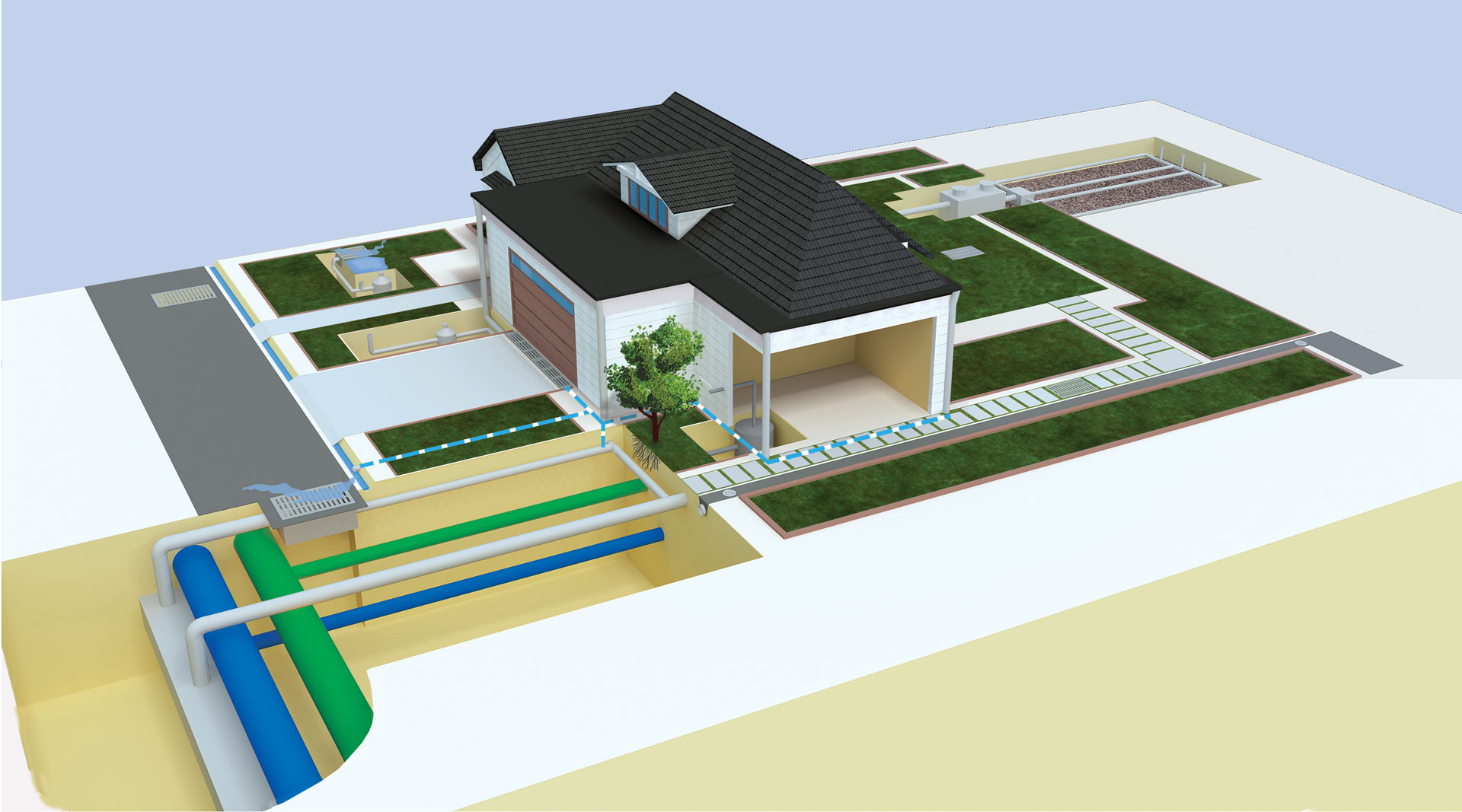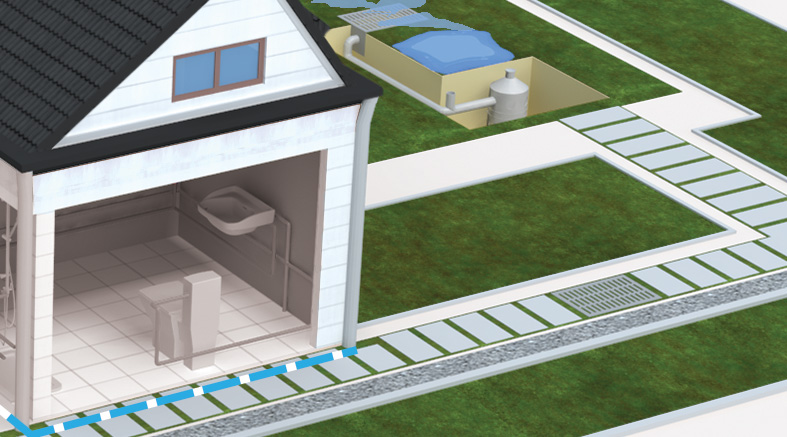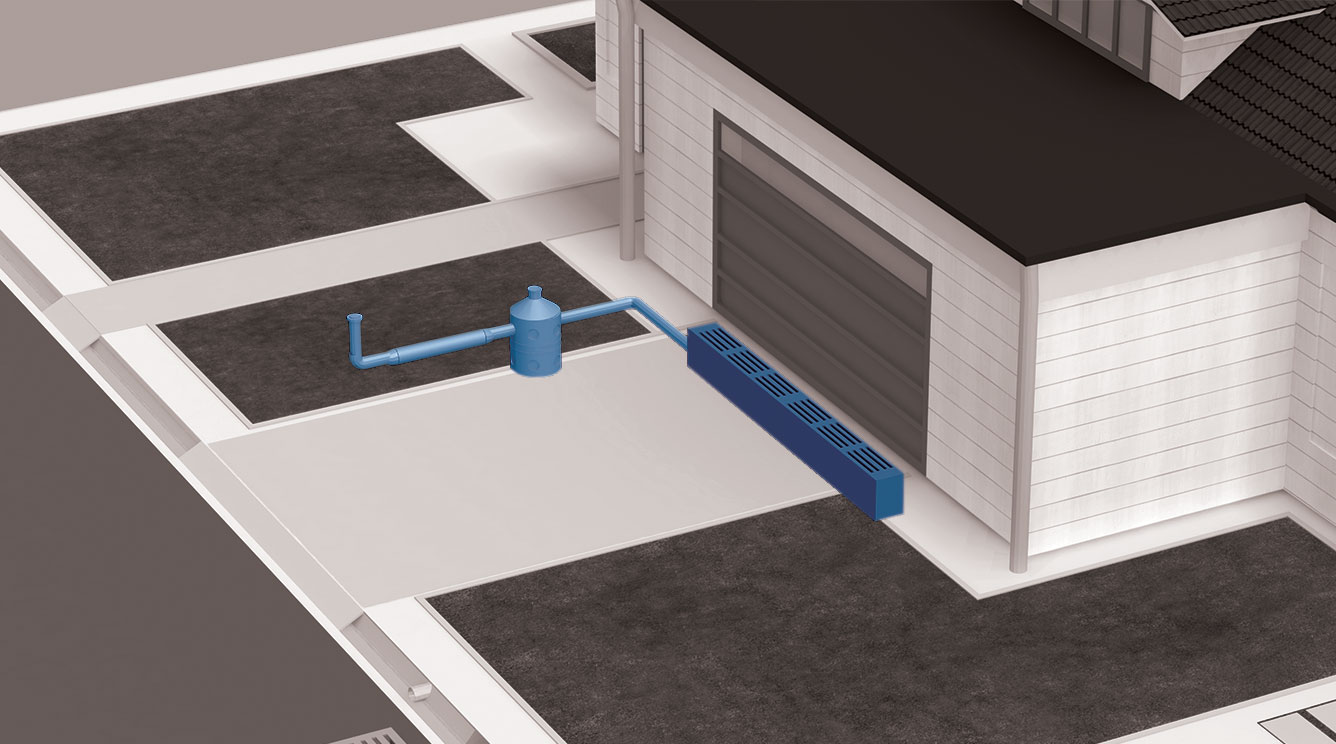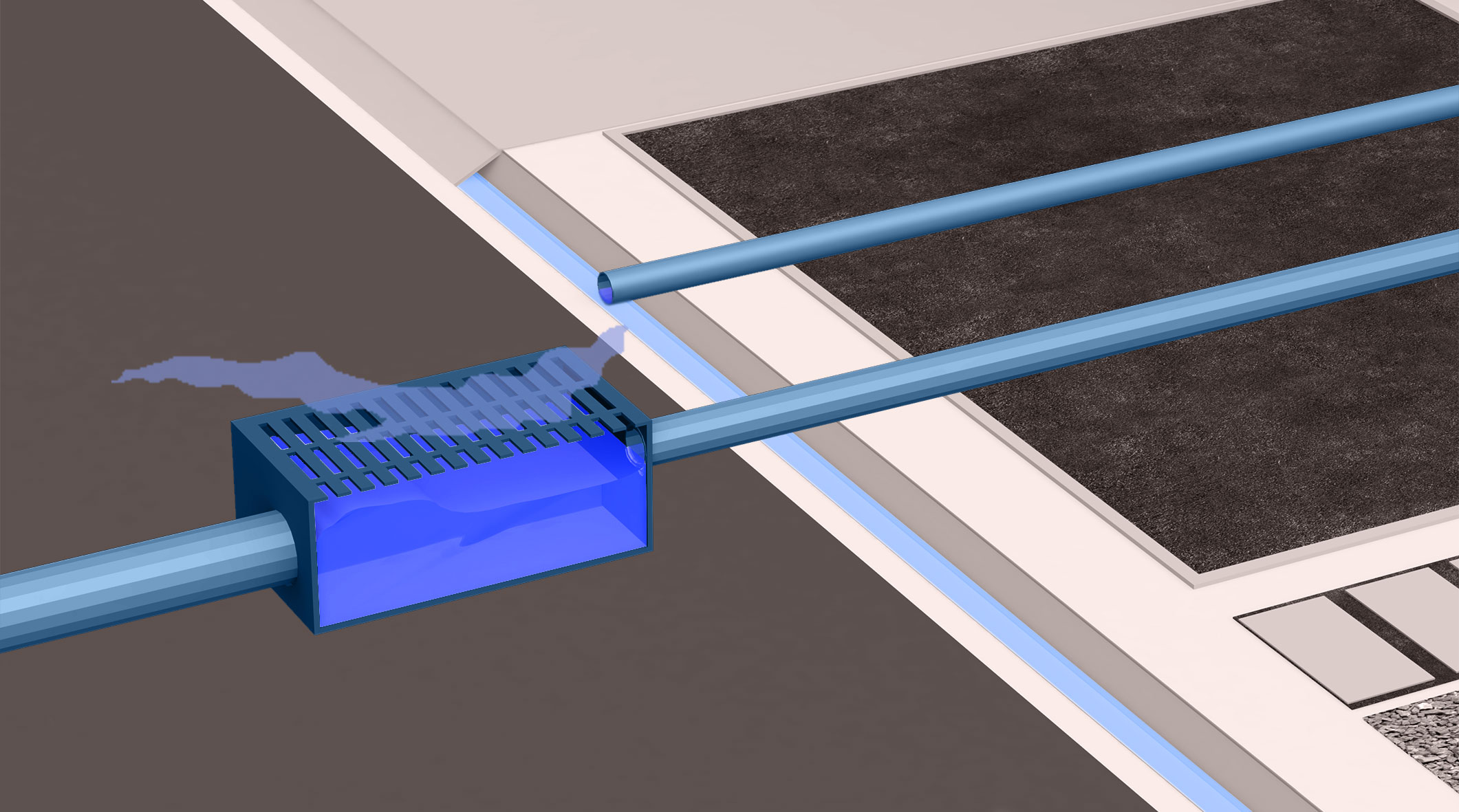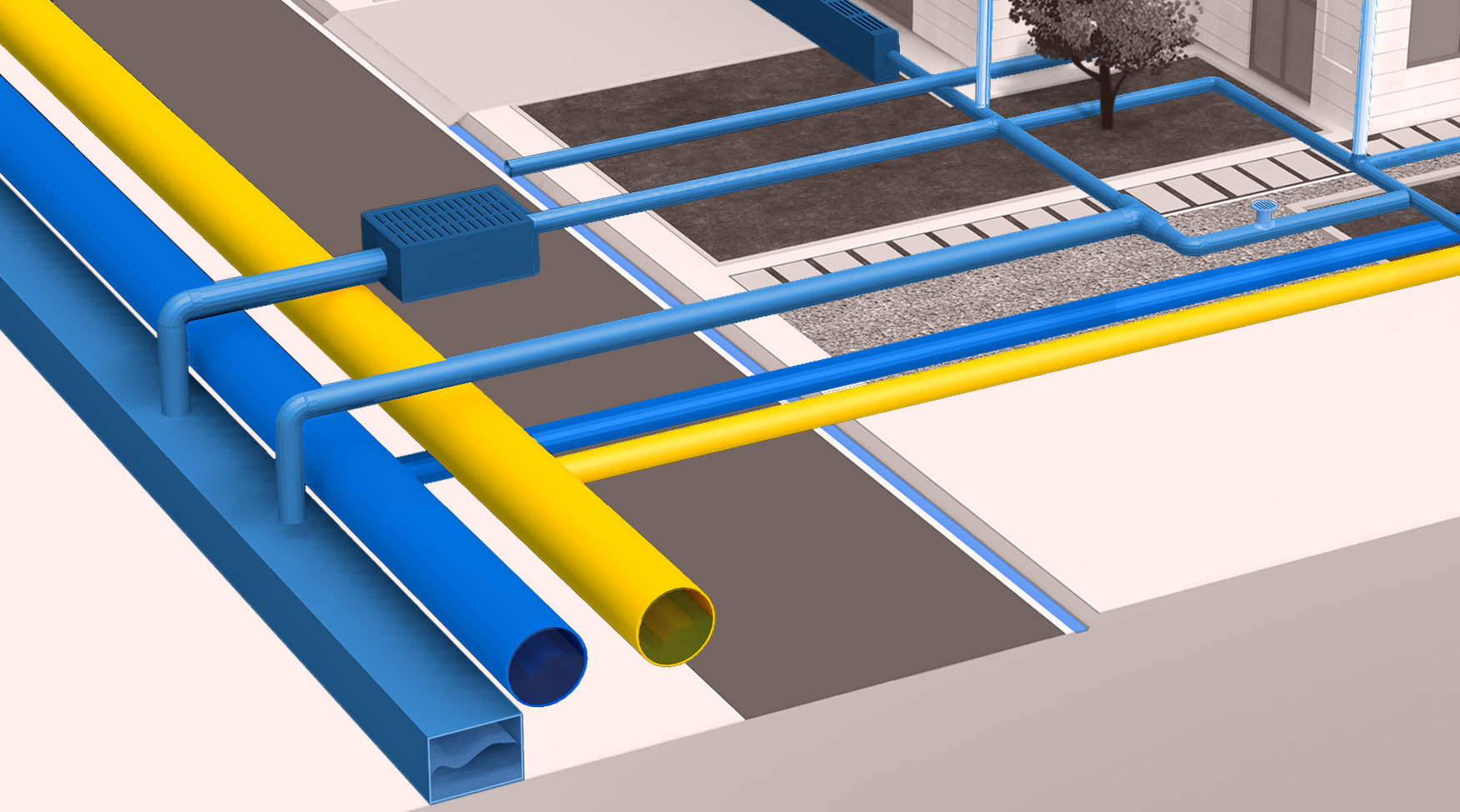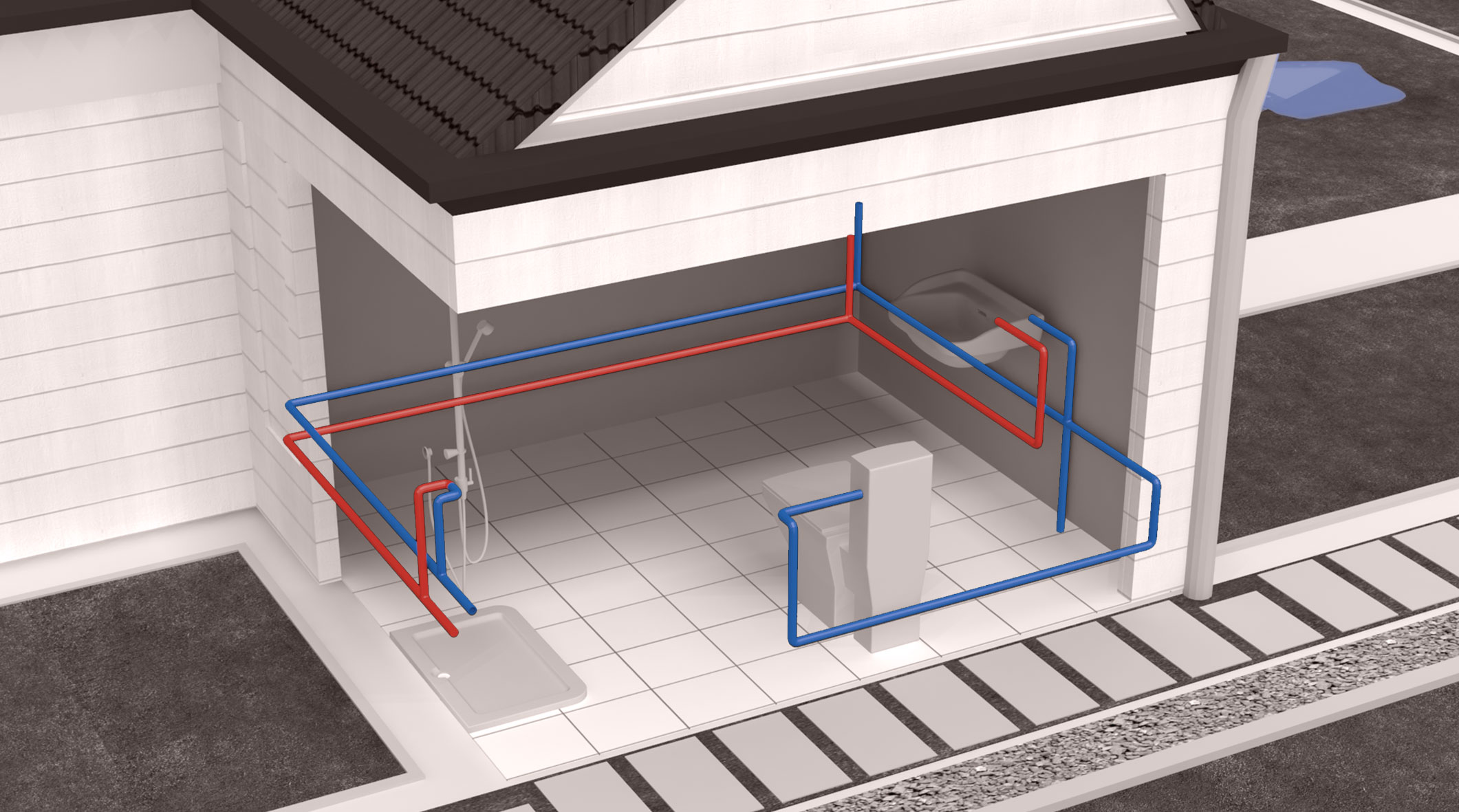1) Dry Well
Dry Well
A subsurface porous-walled chamber that allows water to slowly soak into the ground, where it can then be dispersed back into the groundwater.
2) Curb Weep
Curb Weep
Where a drainage system discharges to the city street catch basin, taking onsite water offsite to the city system via a hole cut into the city curb.
3) City Catch Basin Tie-In
City Catch Basin Tie-In
A drainage structure that collects stormwater runoff from surrounding surfaces and connects to the underground stormwater conveyance system.
4) Main Water
5) Main Stormwater
Main Stormwater
City drainage system, intended to collect all rainwater runoff from property and streets, including downspout rainwater.
6) Channel Drain
Channel Drain
Typically installed at the base of an incline on a driveway, patio or impervious surface. Linear drain that collects and moves water into an underground drainage system.
7) Main Sewer
Main Sewer
The line that goes from your house to the city connection or your septic tank.
8) French Drain
9) Yard Drain
Yard Drain
This type of drain collects surface water to prevent standing water or pooling.
10) Catch Basin
Catch Basin
Collects water from hard surface areas, patios/walkways etc. Acts as an access point for maintenance and inspections.
11) Dispersion Trench
Dispersion Trench
Underground or subsurface system that receives water from other drainage collection points around the property and allows the water to disperse underground naturally.
12) Rain Gutter Downspout Drainage
Rain Gutter Downspout Drainage
An underground drainage pipe connected to a roof’s gutters, that redirects water away from the house and foundation.
13) Sump Pump
Sump Pump
An electric pump located in a basin, that detects rising water levels and redirects the water to a location away from your home.
14) Septic System

